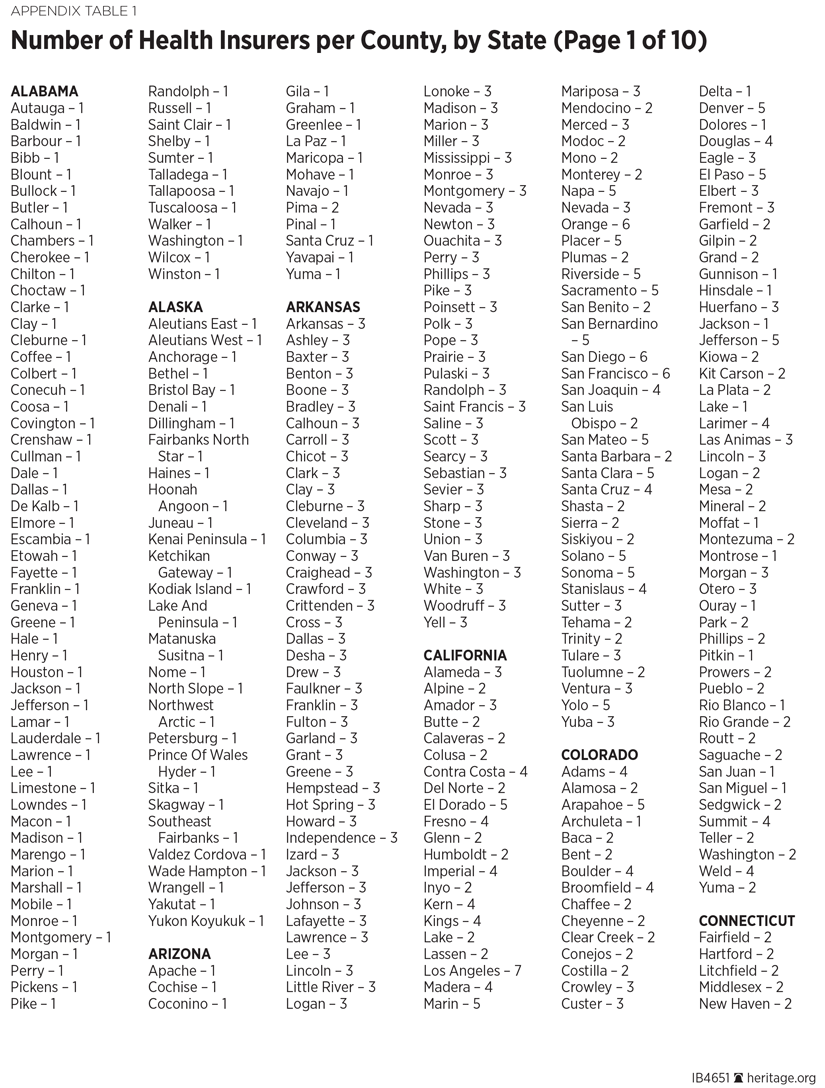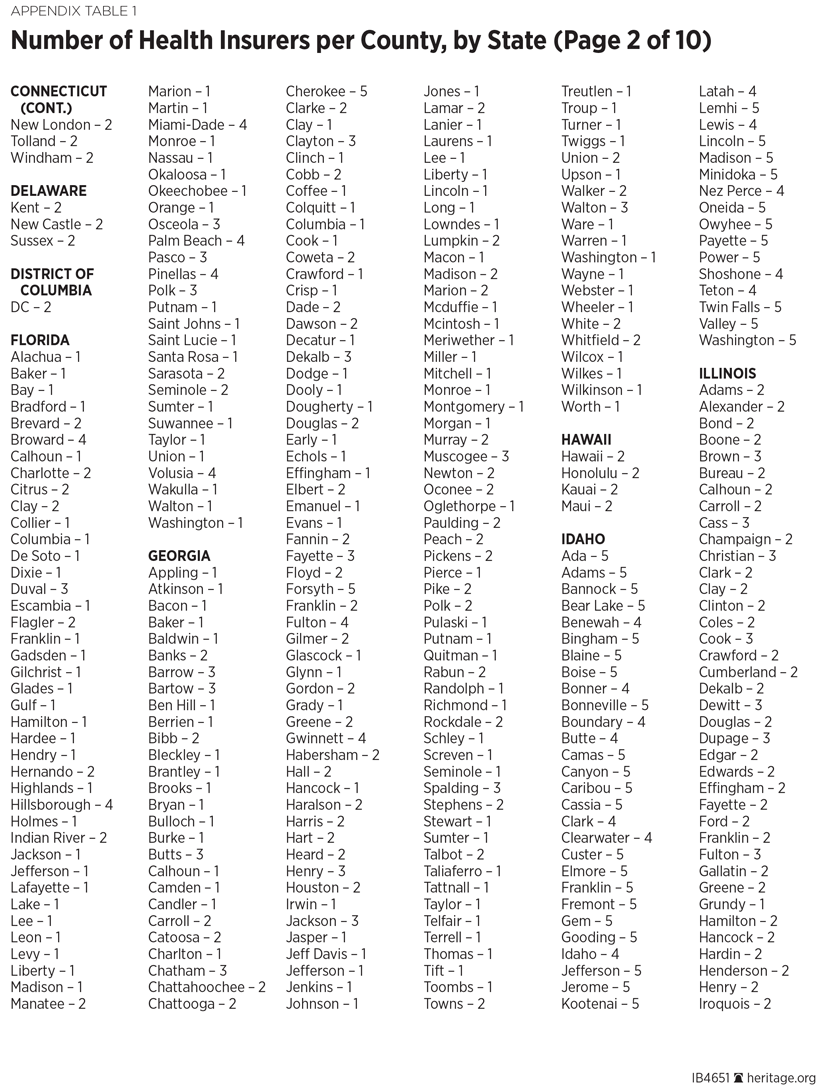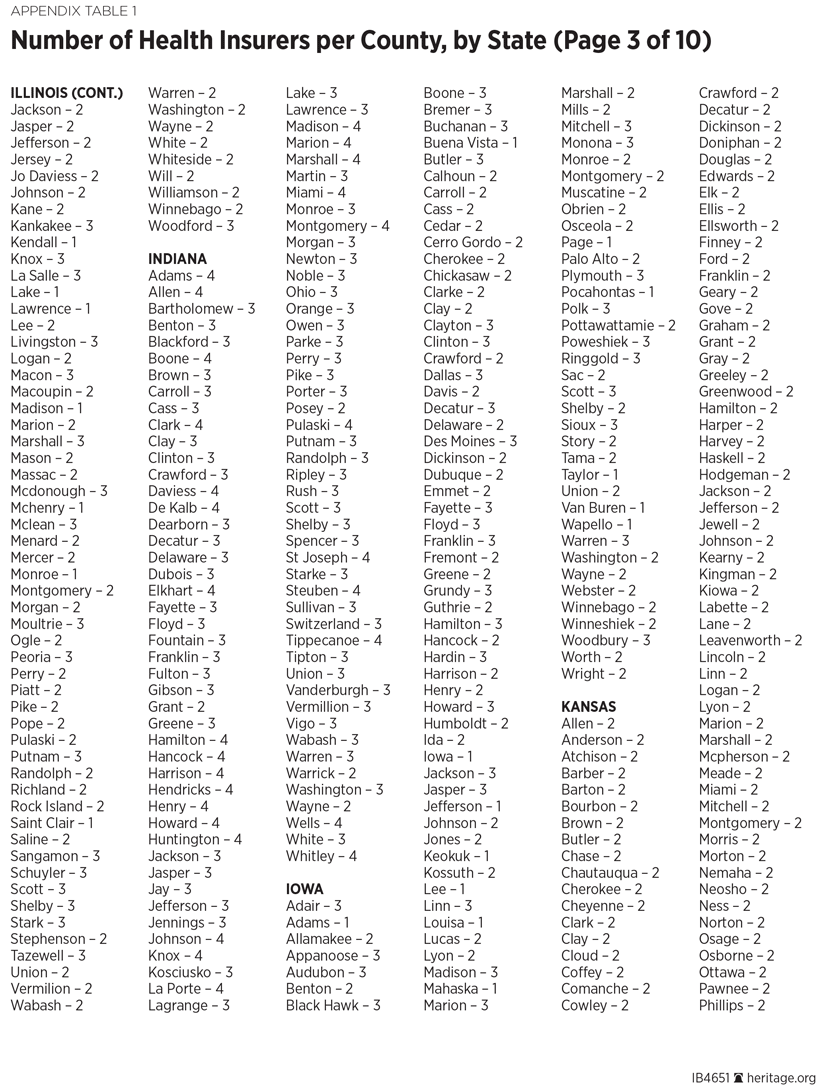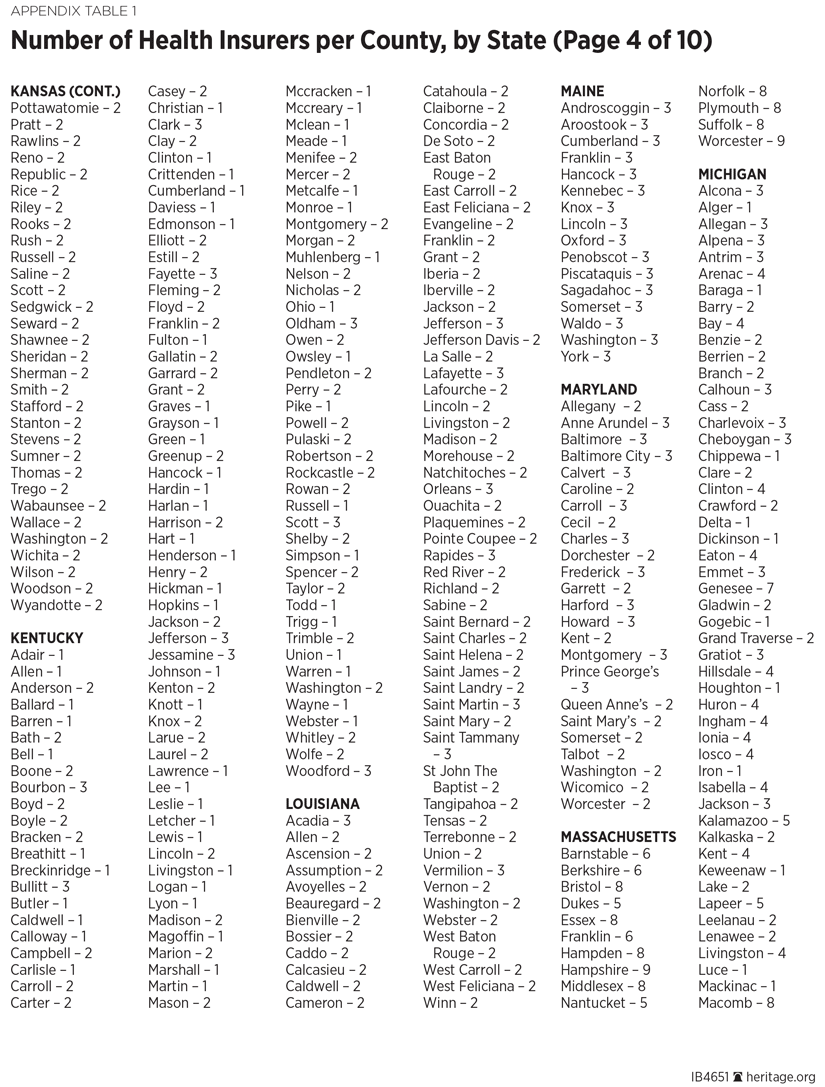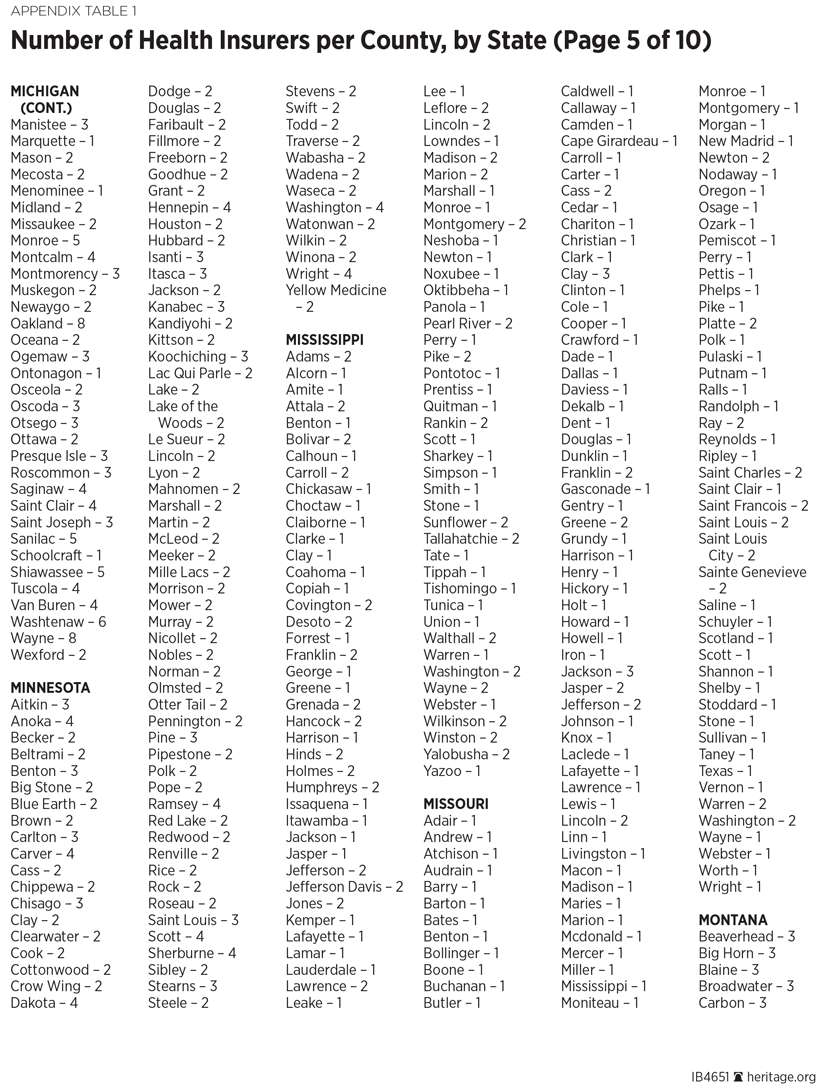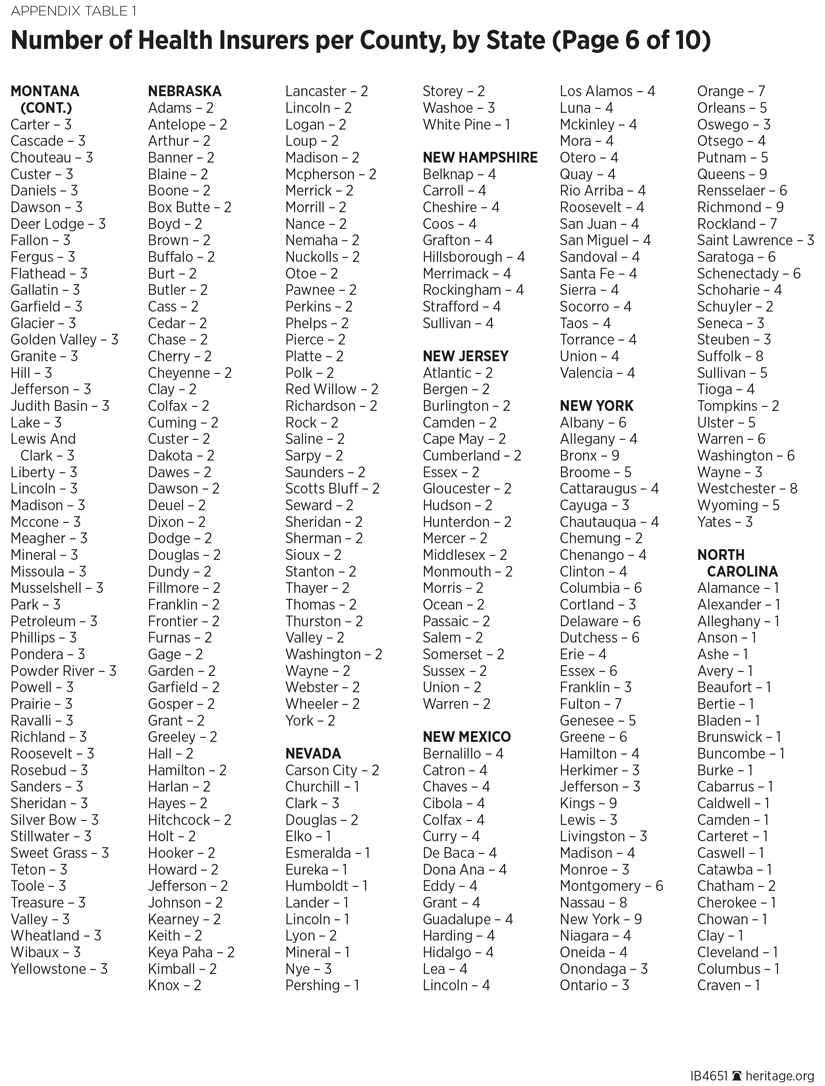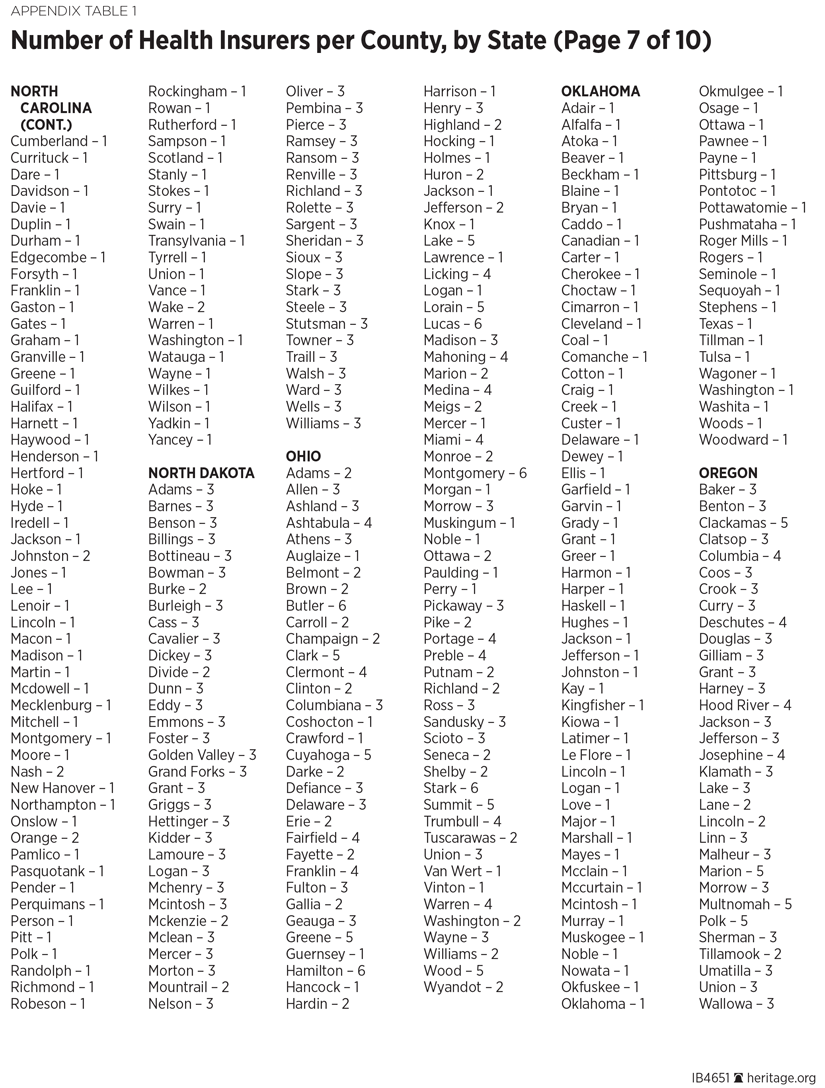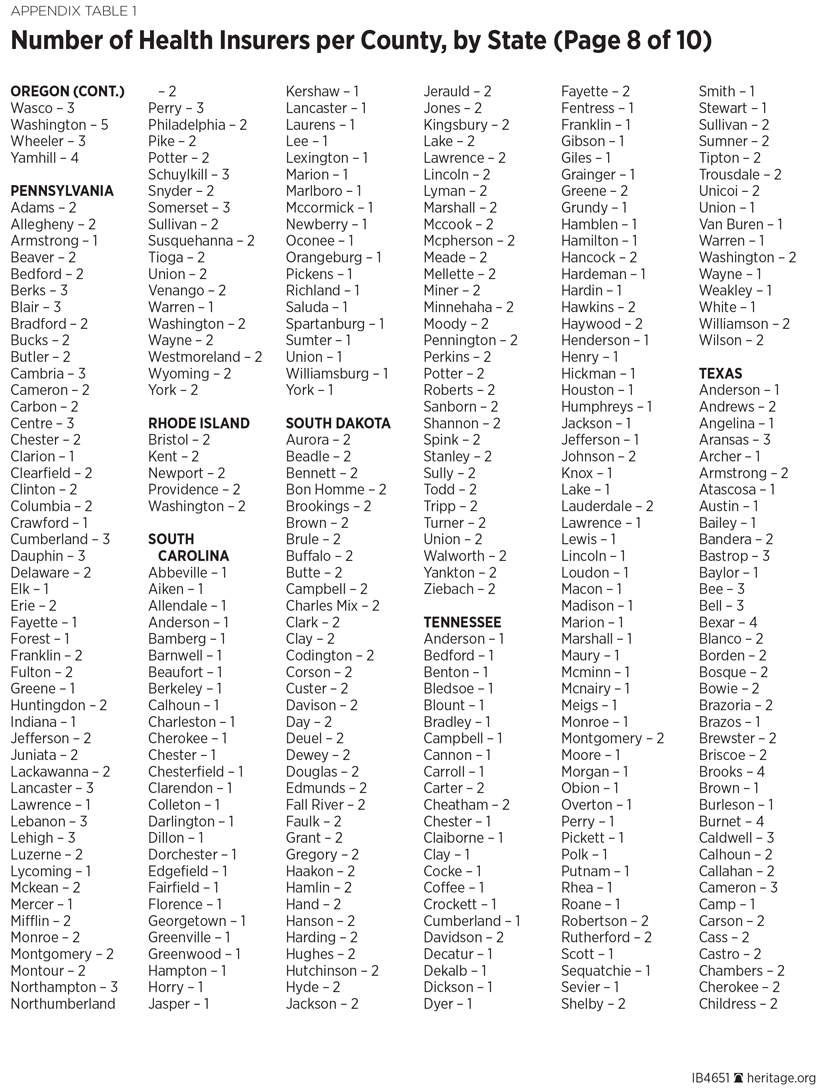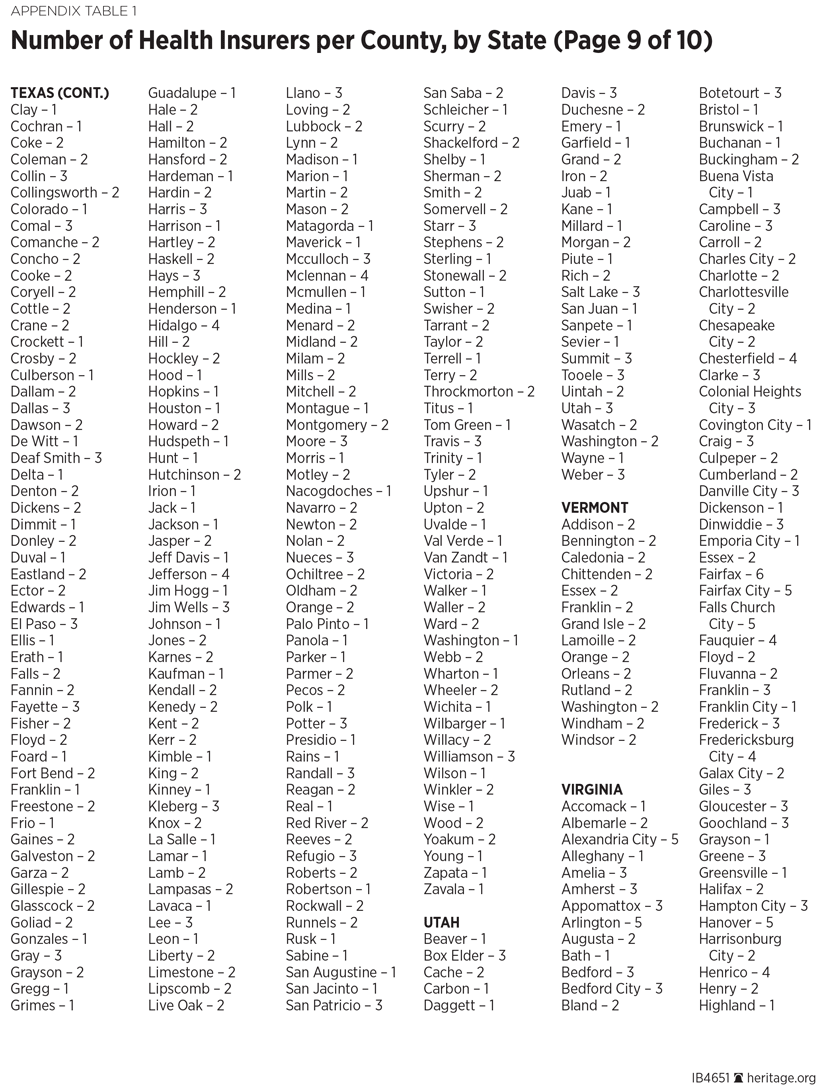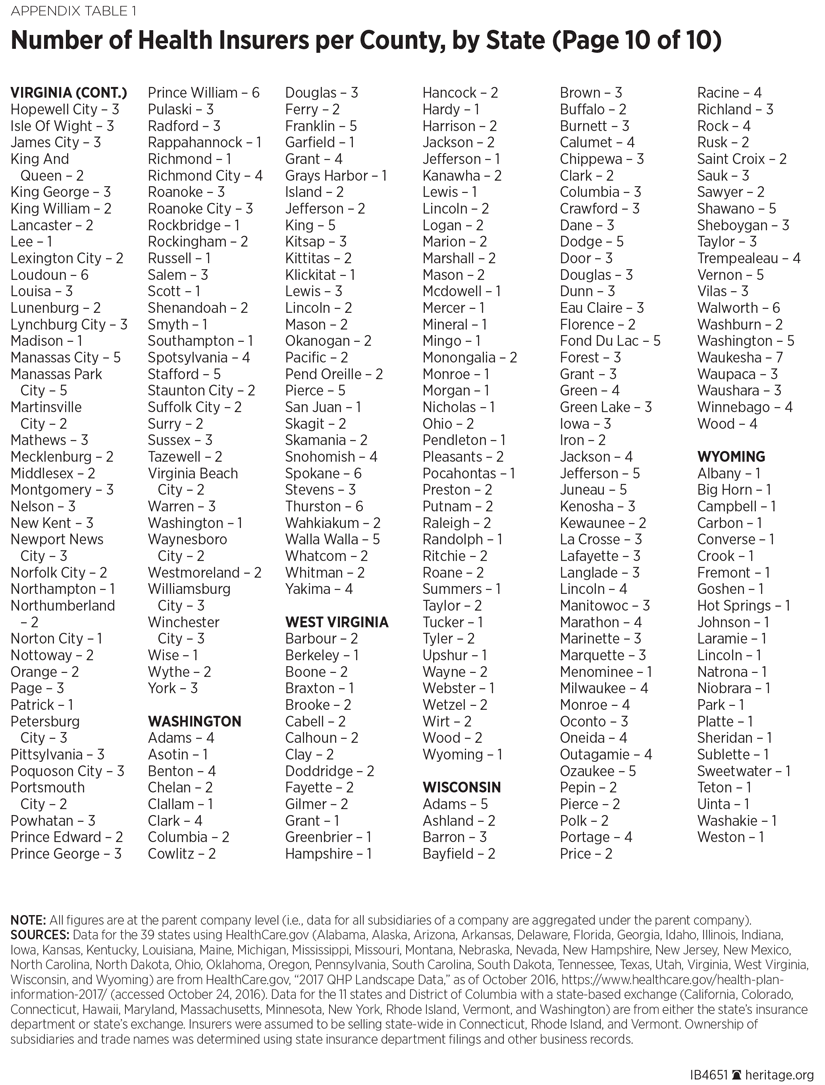One of the stated aims of the Affordable Care Act (ACA) was to increase competition among health insurance companies.[REF] That goal has not been realized, and by several different measures the ACA’s exchanges offer less competition and choice in 2017 than ever before. Now in the fourth year of operation, the exchanges continue to be far less competitive than the individual health insurance market was before the ACA’s implementation. Moreover, insurer participation in the law’s government-run exchanges has declined over the past two years and is now at the lowest level yet. This lack of insurer participation leaves exchange customers in 70 percent of U.S. counties with no insurer choice, or a choice between merely two insurers.
Measuring Competition and Choice in the Exchanges
This Issue Brief reviews insurer participation in the ACA’s exchanges in 2017 in all 50 states and the District of Columbia, and compares those results with insurer participation in the pre-ACA (2013) individual market. Insurer exchange participation for 2017 is also compared with insurer exchange participation in previous years at the state and county levels. Insurers that offer exchange coverage through more than one subsidiary in a state are properly counted as one carrier (the parent company), while insurers that offer coverage in more than one state are counted for each state (as exchange participation is a state-level decision).
State-Level Insurer Competition in the Exchanges
One way to measure insurer competition is to assess insurer participation on a state-by-state basis. That analysis, summarized in Table 1, shows the number of carriers in each state and the District of Columbia in the individual market in 2013, and in the exchanges each year since they began in 2014.
Pre-ACA Individual Market
In 2013, the last year before the ACA’s implementation, 395 insurers sold coverage in the individual market across all states and the District of Columbia. On the exchanges, in 2017, there are a total of 218 insurers selling coverage across all states and the District of Columbia. Thus, the 2017 exchanges as a whole are about 45 percent less competitive than the individual market was before the ACA was implemented.
2017 Exchange vs. 2016 Exchange
As shown in Table 1, the level of competition on the exchanges has somewhat fluctuated over the past four years. There was a net increase in insurer participation from 2014 to 2015, a slight decline from 2015 to 2016, and now a more significant (24 percent) decline from 2016 to 2017. For 2017, the exchanges have the fewest number of insurers since the exchanges launched. Relative to 2016, 33 states have fewer insurers selling coverage in the exchange, 16 states and the District of Columbia have the same number of insurers, and just one state—Virginia—has an increase in insurers offering exchange coverage in 2017. For 2017, there are five states—Alabama, Alaska, Oklahoma, South Carolina, and Wyoming—that have only one exchange insurer. Another 12 states (Arizona, Connecticut, Delaware, Hawaii, Mississippi, Nebraska, New Jersey, North Carolina, Rhode Island, South Dakota, Vermont, and West Virginia) and the District of Columbia have only two insurers selling exchange coverage in 2017.
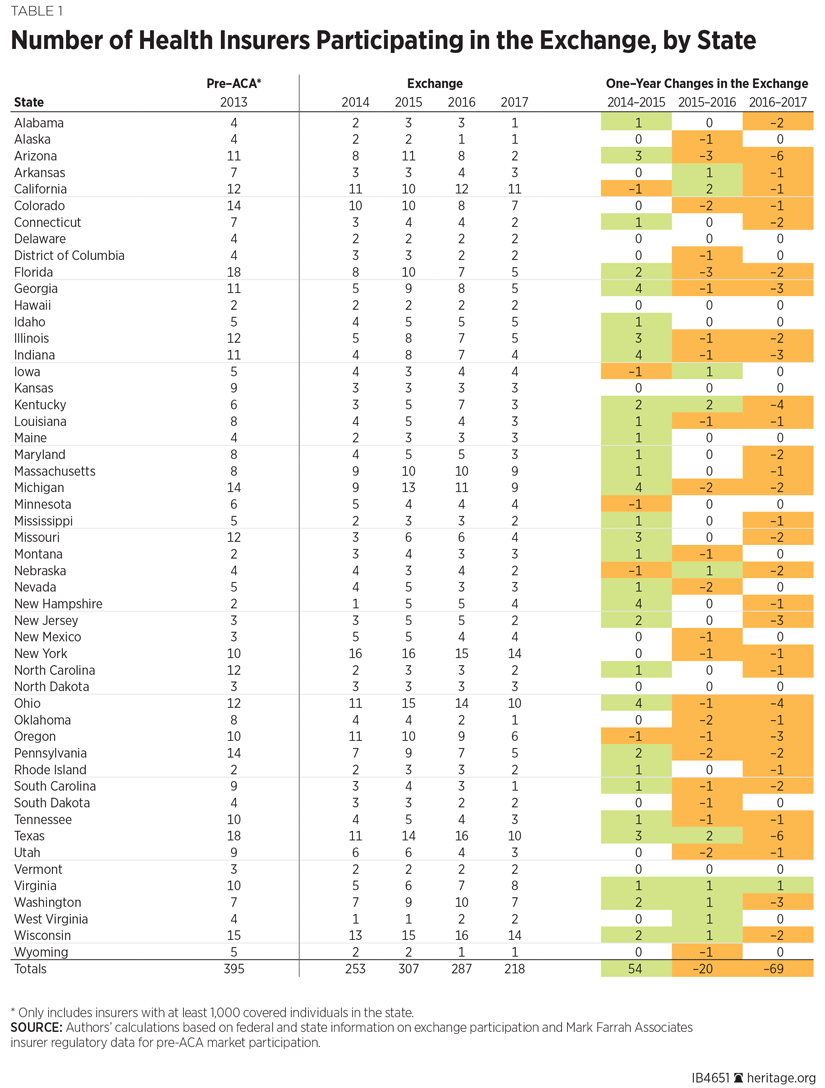
County-Level Insurer Competition in the Exchanges
Though state-level data are informative, for consumers, the most relevant measure of competition is at the county level. That is because health plans are offered (and priced) on a local basis, and many insurance carriers do not offer coverage statewide. Therefore, state-level figures can overstate the amount of choice available to consumers. For example, in Texas, 10 insurers are selling coverage on the exchange in 2017. But no one in Texas can choose from among 10 insurers on the exchange. In fact, 86 percent of Texas counties have only one or two insurers selling exchange coverage. The highest number of competing insurers in any Texas county is four, and only six of the state’s 254 counties have that many. County-level insurer competition on the exchanges has been limited for a significant portion of the country every year since the exchanges launched, as shown in Chart 1, and this year that situation is far more prevalent. For 2017, nearly 70 percent of U.S. counties will have either an insurer monopoly or duopoly on the exchange.
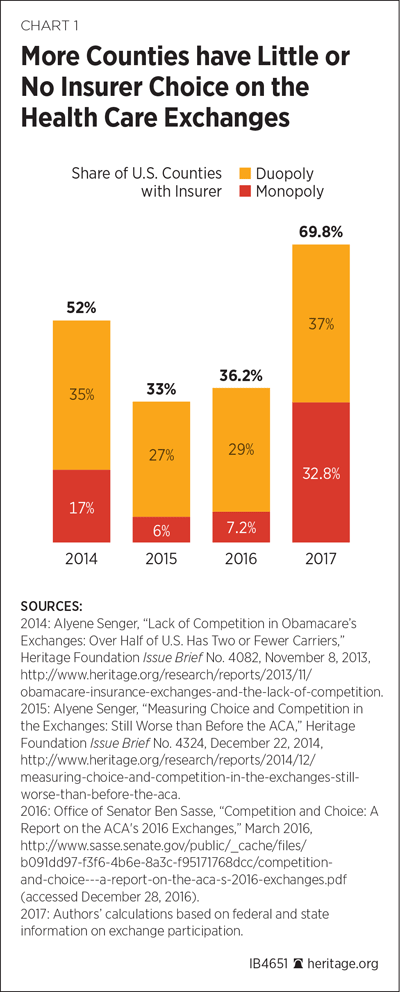
The number of counties with insurer monopolies on the exchange increased dramatically from about 7 percent in 2016 to nearly 33 percent in 2017.[REF] There has also been a significant increase in the number of counties with a duopoly in 2017—from 29 percent in 2016 to 37 percent in 2017.[REF]
Understanding the Steep Decline in Exchange Participation
In 2017, there were 80 insurer exits from the exchanges and 11 entrants, for a net decrease in insurer participation of 69 (summarized in Table 1). More than half of all exits can be attributed to withdrawals from multiple states by a few major health insurance companies, particularly UnitedHealthcare. Insurers cited financial losses from their exchange business as the main reason for dropping coverage offerings. The fact that the ACA’s temporary reinsurance program—which provided insurers with large subsidies to offset the cost of high-cost enrollees—also expired at the end of 2016 may have further induced carriers to exit the exchange market in 2017.[REF]UnitedHealthcare, the nation’s largest insurer, indicated early in 2016 that it was having financial trouble with its exchange business. Indeed, it released estimates that it lost $475 million on ACA-compliant plans in 2015 and expected to lose more than $500 million in 2016.[REF] Accordingly, for 2017, the company exited 31 of the 34 states where it offered exchange coverage in 2016.[REF] In addition to UnitedHealthcare’s massive withdrawal, Aetna exited 11 of 15 states, and Humana left four out of the 15 states, in which they sold coverage in 2016.
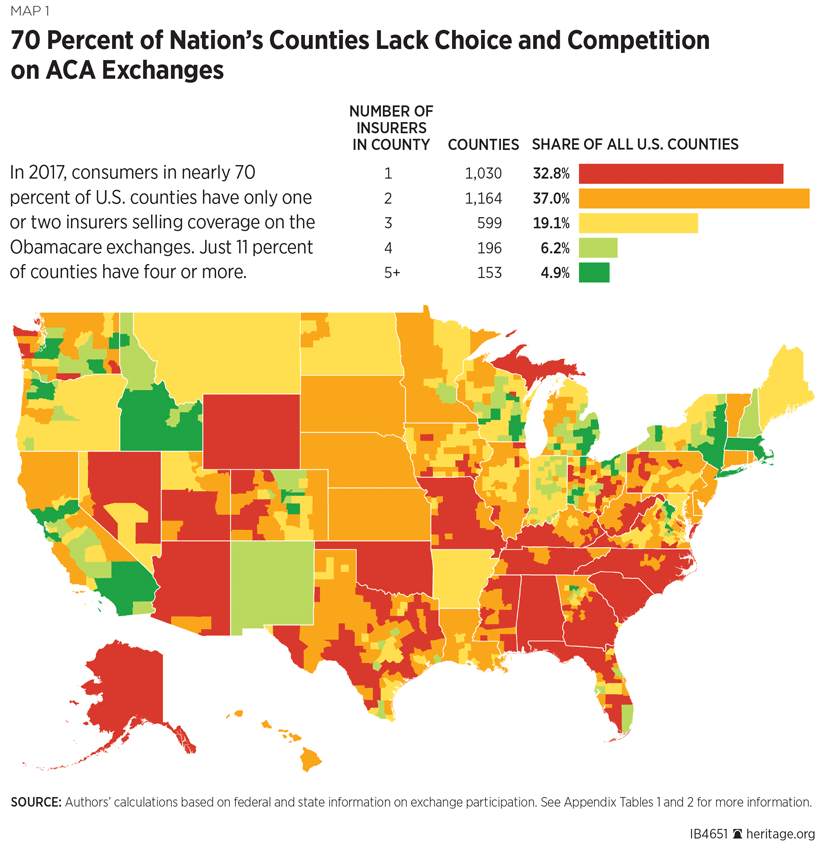
Insurer Participation Unlikely to Increase in 2018
Under current law, it is highly unlikely that insurer participation in the ACA exchanges will increase in 2018. The exchange environment is getting worse in many respects, as insurers continue to lose money and premiums continue to rise.[REF] Anthem continues to sell exchange coverage in 14 states. However, the company has indicated that if its exchange experience does not improve, it may not participate to the same extent in 2018. During a phone call with investors on November 2, 2016, Anthem CEO Joseph Swedish said: “2017 is a critical year as we continue to assess the long-term viability of our exchange footprint. If we do not see clear evidence of an improving environment and a path toward sustainability in the marketplace, we will likely modify our strategy in 2018.”[REF] Furthermore, there are several pending insurer mergers. If the proposed acquisitions of Cigna by Anthem, Humana by Aetna, and Group Health Cooperative (in Washington state) by Kaiser, are approved, they are all likely to reduce the number of exchange-participating insurers in 2018 and beyond.
Lack of Competition: One More ACA Failure
Among the many consequences of the ACA are its effects on insurer competition, particularly in the law’s government-run exchanges. The law has created an environment in which residents in 70 percent of the nation’s counties only have one or two insurance options if they purchase health coverage on the exchange. Given that proponents of the law expected it to increase insurer competition, diminishing consumer choice and insurer competition can be added to the list of ACA failures. Congress must repeal the ACA in order to revive state insurance markets, increase choice, and decrease costs for Americans who buy health insurance.
—Edmund F. Haislmaier is a Senior Research Fellow, and Alyene Senger is a Policy Analyst, in the Institute for Family, Community, and Opportunity at The Heritage Foundation.
